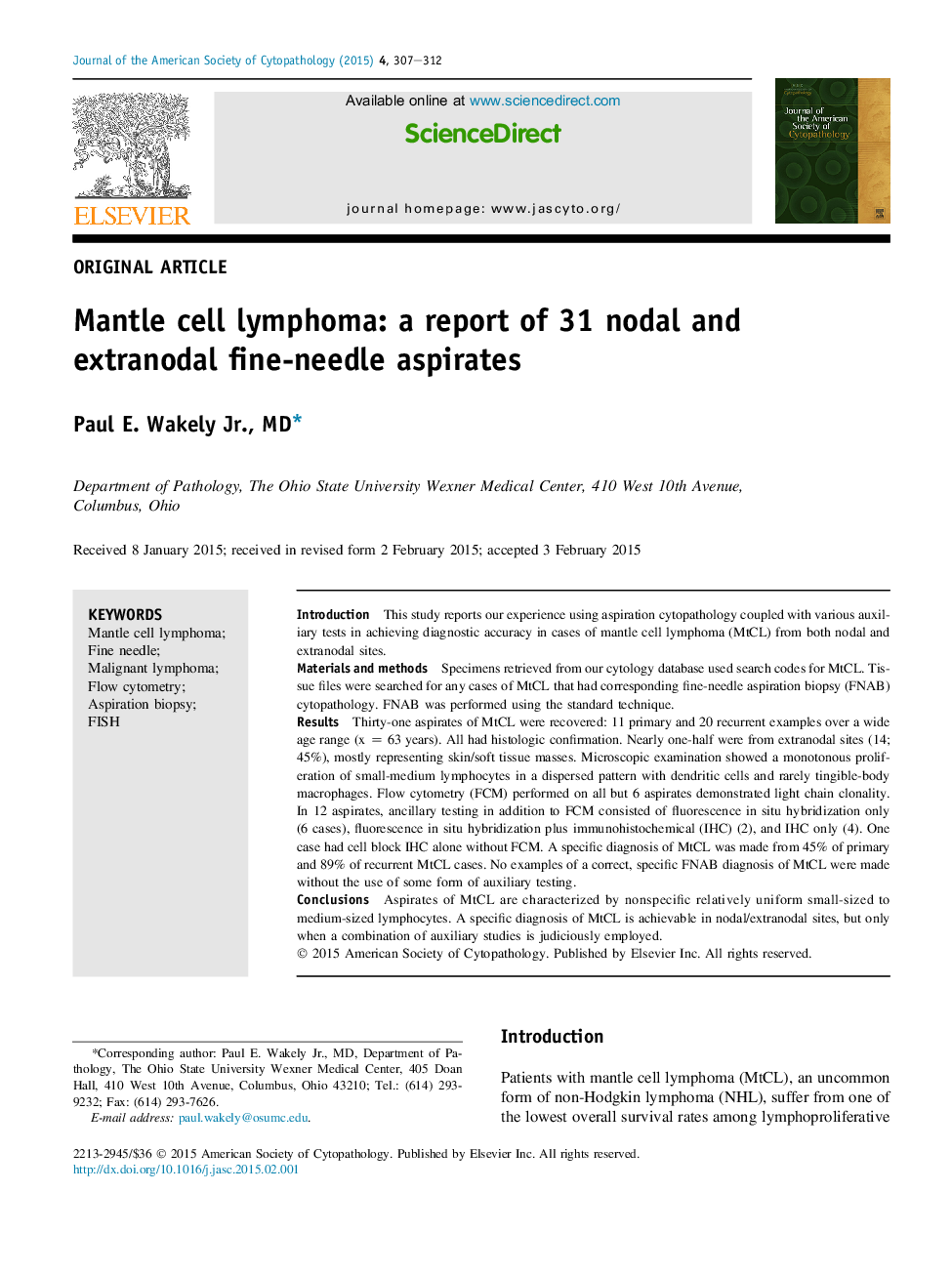| Article ID | Journal | Published Year | Pages | File Type |
|---|---|---|---|---|
| 2776090 | Journal of the American Society of Cytopathology | 2015 | 6 Pages |
IntroductionThis study reports our experience using aspiration cytopathology coupled with various auxiliary tests in achieving diagnostic accuracy in cases of mantle cell lymphoma (MtCL) from both nodal and extranodal sites.Materials and methodsSpecimens retrieved from our cytology database used search codes for MtCL. Tissue files were searched for any cases of MtCL that had corresponding fine-needle aspiration biopsy (FNAB) cytopathology. FNAB was performed using the standard technique.ResultsThirty-one aspirates of MtCL were recovered: 11 primary and 20 recurrent examples over a wide age range (x = 63 years). All had histologic confirmation. Nearly one-half were from extranodal sites (14; 45%), mostly representing skin/soft tissue masses. Microscopic examination showed a monotonous proliferation of small-medium lymphocytes in a dispersed pattern with dendritic cells and rarely tingible-body macrophages. Flow cytometry (FCM) performed on all but 6 aspirates demonstrated light chain clonality. In 12 aspirates, ancillary testing in addition to FCM consisted of fluorescence in situ hybridization only (6 cases), fluorescence in situ hybridization plus immunohistochemical (IHC) (2), and IHC only (4). One case had cell block IHC alone without FCM. A specific diagnosis of MtCL was made from 45% of primary and 89% of recurrent MtCL cases. No examples of a correct, specific FNAB diagnosis of MtCL were made without the use of some form of auxiliary testing.ConclusionsAspirates of MtCL are characterized by nonspecific relatively uniform small-sized to medium-sized lymphocytes. A specific diagnosis of MtCL is achievable in nodal/extranodal sites, but only when a combination of auxiliary studies is judiciously employed.
